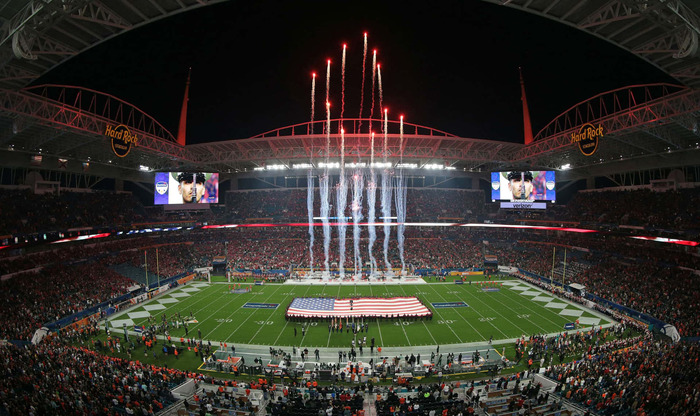The Western Hemisphere’s biggest marketing event of the year is a little more than two weeks away, with Super Bowl LVIII set to kick off on Sunday, February 11.
Each year’s Super Bowl is a media phenomenon, whether it’s the game taking place itself or the slew of halftime shows, sponsors and advertisers that all want to get a piece of the pie in the most-watched program in American television, which typically averages more than 100 million viewers.
Just about every element of the event will come under scrutiny, whether it’s the color of National Anthem singer Reba McEntire’s nail polish or which brand puts together the best commercial: with the cost of a 30-second spot averaging more than $7 million, advertisers want to get the most bang for their buck as they try to woo hundreds of millions of people to buy their products. Here’s a look at everything you need to know about Super Bowl advertisements, whether it’s the return on investment for the businesses doing the advertising, the lasting cultural impact of the commercials or the way the process has changed to better suit the streaming model used by media outlets today.
Return on Investment
Seven million dollars is a lot of money to spend in one place, and even more so when the product has a thirty-second run time. A 2021 study by Kantar Group, a United Kingdom-based data, insights, and consulting company, found that the return on investment is often much greater, though.
That study found that in the wake of Super Bowl LV that year, advertisements delivered an average return on investment (ROI) of $4.60 for every dollar spent. For those of you who don’t want to whip out the calculators, that means that each 30-second commercial brought in roughly $30 million in revenue for the company that produced it. Many brands landed in the double digits, and when one considers that a 300 to 500 percent ROI is considered strong for television advertisements, that’s an excellent margin to average: many companies logged ROIs in double digits.
Moreover, it’s crucial to consider that this study unfolded against the backdrop of the economic challenges posed by the COVID-19 Pandemic. As we approach 2024’s Super Bowl, the economic landscape is poised for recovery, potentially amplifying the already impressive ROI figures witnessed in 2021. The upcoming Super Bowl presents an even more promising opportunity for advertisers to secure substantial returns on their investments.
Cultural Phenomena
While many people tune out during the commercials in a regular game or program, with the Super Bowl, they become a cultural staple of their own. People become an active captive audience, curious to see which company puts out the best commercials, intently viewing every second of the program. This makes advertising in the big game even more worth it than it would be at any other time, helping to bring the lofty price tags into perspective.
What’s more, the best Super Bowl commercials aren’t just a 30-second expense. Instead, they retain their relevance for years, like Coca-Cola’s famous “Hey Kid, Catch” commercial starring Pittsburgh Steelers defensive tackle Mean Joe Greene, which aired during the 1980 Super Bowl and remains part of the cultural lexicon today. Other examples include Mountain Dew’s “Puppy Monkey Baby” commercial during Super Bowl 50, which generated more than 300,000 social media impressions in the first 30 seconds after it aired and still appears on Twitter to this day.
The adage goes that there’s no such thing as bad publicity, and “Puppy Monkey Baby” follows this to a T, with the freakish mashup of a Pug’s head, monkey’s upper body, and baby’s legs sticking in people’s minds even if they didn’t like it. Anything that gets people talking creates a lasting return on investment.
Changes to the Game
One other interesting thing to keep in mind when it comes to the Super Bowl is how the streaming model has altered the way we consume media. In years past, one network would get a monopoly on the Super Bowl broadcast, rotating through CBS, NBC, Fox, and ABC every four years.
These days we’re starting to see a shift away from that gentleman’s agreement: CBS has the main broadcast, but NBC is getting a share of the action as well, as they’ll be able to broadcast it on Peacock, their exclusive streaming service. There will also be a kid-themed broadcast aired on Nickelodeon, meaning that viewers will have the pick of the litter when deciding how they want to watch the big game.
This will impact advertising significantly: because Peacock is a subscription service, they have more insight into their customers than the average network, allowing them to tailor the ads they run to a specific audience, much like Nickelodeon can run commercials that will appeal to a younger demographic.
It’ll be interesting to see how social media discourse handles the different advertisements now that everyone won’t be focused on the same thing, and how the price of advertisements might change in the future with better-directed commercial campaigns.


